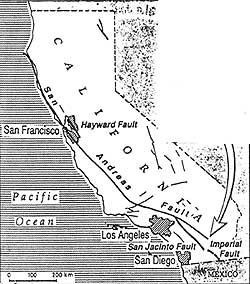Announcing earthquakes
1999/08/15 Kortabarria Olabarria, Beñardo - Elhuyar Zientzia
A group of representatives from the University of Edinburgh gave the news to the Icelandic authorities that a short time was going to produce a large earthquake. Two weeks later the warning was repeated again and the data were added: if the earthquake occurred immediately with a magnitude of 5 on the Ritcher scale, if a couple of months were delayed it could be reached to 6. At 3 days after the second warning, in Iceland there was an earthquake of 5th magnitude, 2 kilometers from the seismic station that carried out the measurements. This spectacular event was the result of the research carried out in the PRENLAB project, funded by the European Union.
The step is important. In fact, the system used in the PRENLAB project, which has used Iceland as a natural laboratory, is based on scientific techniques and not on the symptomatology used so far. The technique is based on the measure of the relative delay of seismic waves, which is modified before the earthquake. In order to perform the measurements correctly, it is necessary to form a huge network of seismometers. According to experts involved in the project, many of the earthquakes that occur if the seismic network expands in the world could be predicted, as the system has shown its effectiveness.
Since 1975, earthquakes have killed more than 340,000 people and an average of 20,000 people have been killed every year since the beginning of the century. These figures show that the success of the new technique can be beneficial to humanity. For this reason, countries like Japan, located in dangerous seismic zones, have shown great interest in the PRENLAB project. In fact, it is believed that if an earthquake could predict over time, many lives could be saved.
The earthquake of Tajikistan
The inhabitants of Tajikistan may not have knowledge of the PRENLAB project; and even if they had it, do not think they would be very happy, since they do not have sufficient resources to take measures before the earthquake.
Tajikistan is located in Central Asia, on the slopes of the Pamir Mountains. The violent earthquake that occurred in 1991 led to the Murcian River numerous rocks and lands, causing the disappearance of the Murcian River and the formation of Lake Sarezckoe. With the passage of time, the lake has been growing and currently has a length of 60 kilometers and a maximum depth of 500 meters. Recently an international team of geologists and experts has been present and has ignited the alarm. According to them, if an earthquake arose from the beginning of the century, the original dam would be broken and the lake would empty in a few minutes. The villages that are below would be flooded, as the giant waves of 100 meters high would be carried ahead. According to experts, when creating, the wave would be 170 meters high, and 1,000 kilometers below, it would still be a two-storey dwelling.
The Tajikistan team of experts has also given more data. For example, if people in the area could not leave before, thousands of people would die. The damage would not be limited to Tajikistan, since the 17 cubic kilometers of water currently collected on the lake would cover 50,000 square kilometers and would be dispersed through lands of Afghanistan, Uzbekistan and Turkmenistan. The water would also reach the Aral Sea, which in the last 30 years has dropped to half.
What has been said so far seems a sensationalist prediction of the massacre, and it may be, but in addition to the 1911 earthquake, there are other data that increase concern. In fact, 5 years ago part of the Lake Sarezckoe dam fell naturally and year after year is losing water. A small earthquake, which over the last decade has also been of 7th magnitude, can cause a fissure that would open the escape to urgent water.
The breakage of the possible prey is not the only danger. On the lake there is a great rock that has not fallen. According to experts, if the earthquake caused a water fall, the rock would cause a wave of 1-2 cubic kilometers, overcome the dam and head to the river bed. Therefore, it would produce damage.
The inhabitants of Tajikistan can also have a little optimism if, according to experts, they have problems and solution. Experts recommend the construction of holes in the surrounding mountains and the placement of a pipe that allows to bring water slowly to the surrounding valleys. The reinforcement of the dam structure by artificial means has not been announced since, with a length of 4 kilometers and a height of 500 meters, the consequences can be worse once the movements have begun.
Although the problem is among the inhabitants of Tajikistan, international participation will be necessary in the solution. Tajikistan is not able to tackle the problem with its resources. Even if this is not the case, the support of the PRENLAB project would not be bad.
Published in 7

Gai honi buruzko eduki gehiago
Elhuyarrek garatutako teknologia






